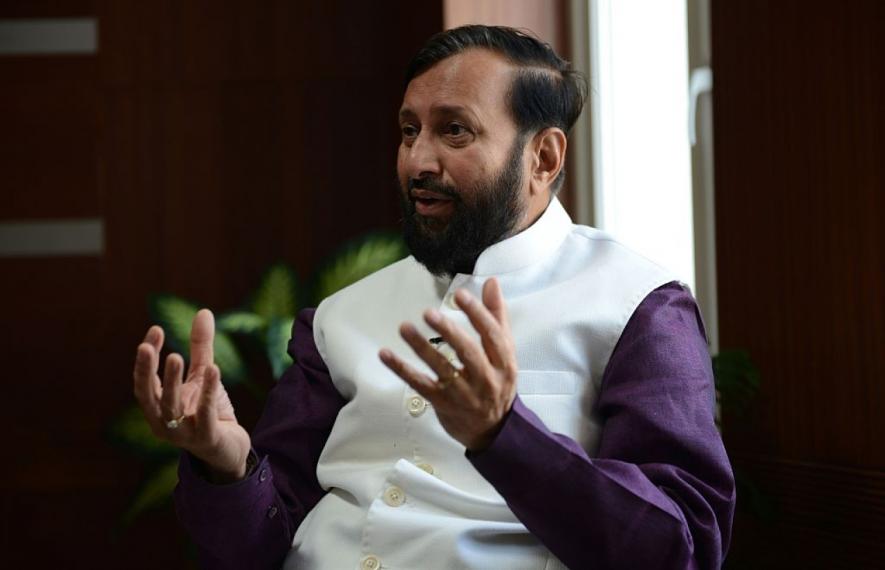Commercialisation of Higher Education Quickens: HEFA To Raise Rs 1,00,000 Crore From Market

On 4 July, the Union Cabinet approved a proposal by the Ministry of Human Resource Development (MHRD) to enhance the capital base of the Higher Education Financing Agency (HEFA) to Rs 10,000 crore and tasking it to raise Rs 1,00,000 crore from the market for the Revitalizing Infrastructure and Systems in Education (RISE) scheme by 2022.
Union HRD Minister Prakash Javadekar said in the press release that Rs 22,000 crore will be mobilised in the current year by HEFA “depending on the actual requirement”.
What this essentially means is that the Higher Education Institutions (HEIs) under the Central Government will have to finance their infrastructure needs by taking loans from HEFA — which will borrow funds from the market — instead of by the grants given by Statutory bodies (UGC and AICTE). The Institutions would then have to repay the loans, albeit at no interest, by themselves. How will they be able to do that?
By exorbitantly increasing the fees of students, by curtailing appointments and promotions of teachers and non-teaching staff, by shifting to ‘distance learning model’, by denying promotions and by starting ‘self-financing courses’ — which might not necessarily have any value to social justice and emancipation, or creating a more egalitarian and tolerant society, but rather be the ‘trending’ courses in the market, as decided by corporate interests. This will also give a severe blow to social science research and any other form of research which cannot be applied to increase corporate profits.
Also Read: DUTA Observes Strike Against the Regressive Recommendations of 7thPay Revision
Javadekar further stated that allocation for education had increased from Rs 65,867 crore in 2013-14 to Rs 1,10,000 crore in 2018-19 (67% increase). Although an increase in absolute terms, as a share of the total Union Budget, the allocation to MHRD has declined by 2.7% between 2014-15 and 2018-19, as reported by Firstpost.
But since it is the specialty of this government to twist unfavorable data when it exists, or manufacture data when it doesn’t exist, to present a rosy picture, a short analysis of this year’s budget allocation to MHRD and Department of Higher Education becomes necessary to get the complete picture. Some information from a document by PRS legislative will be adequate for this exercise.
According to this, the Ministry has been allocated Rs 85,010 crore. Out of this, the Department of Higher Education has been allocated Rs 35,010 crore, accounting for 41% of the Ministry’s total allocations. This Department was allocated Rs 26,750 in 2013-14. As for HEFA, it has been allocated Rs 2,750 crore for 2018-19, after an initial allocation of Rs 250 crore in 2017-18.
So while the change in allocation (from the revised estimate/RE 2017-18 to the budget estimate/BE 2018-19) for HEFA increased by a 1000% — the allocation for ‘Statutory and Regulatory bodies (UGC and AICTE)’ saw a decrease of 3.7%, ‘Grants to Central Universities’ saw a decrease of 11.2%, allocations to IITs declined by 23.3%, to IIMs declined by 3.0%, to NITs declined by 12.7%, and allocation to ‘Digital India-e-learning’ declined by 12.0%.
So it would be beneficial to the HRD Minister, if before praising Modi and his government’s policy decisions, he looks up his own government’s budget. A budget which was discussed for just 27 minutes.
Prakash Javadekar hailed this step, like he does every other destructive step that his Ministry has taken over the past four years, as a “very big step to boost the education sector”.
Also Read: 4 Years of Systematic Destruction of Education Under Modi Regime
It might very well be a boost to the “education sector”, but is it a step to catalyse social change? Far from it. It is solely a move towards privatisation and commercialisation of higher education in our country. The repetitive mentions of “world-class universities” and “top-100 rated global universities” betray the increasing pace of neoliberal reforms in the higher education sector (as in other social sectors like health and social welfare), brought about by the Modi regime. Don’t be fooled by the grandiose claims of creating world-class universities, focus on the persistent resistance which millions of students, teachers and activists have been offering to save the little gains we have achieved in the last 70 years after Independence.
Also Read: Students’ Movement Needs a Renewed Focus on Education Issues to Fight Back BJP’s Policy Attacks
HEFA (a joint venture between MHRD and Canara Bank) was set up on 31 May 2017 by the Central Government as a non-profit, Non-Banking Financing Company (NBFC) for mobilising extra-budgetary resources for building crucial infrastructure in the higher educational institutions under the central government.
So far, funding proposals worth Rs 2,016 crore have already been approved by HEFA. In November 2017, the agency allocated Rs 2,066 crore for six higher education institutions — the IITs in Mumbai, Delhi, Chennai, Kharagpur and Kanpur, and the National Institute of Technology, Suratkal — to improve research infrastructure there.
Also See: Thousands March in Shiksha Bachao Rally to Save India’s Future
Get the latest reports & analysis with people's perspective on Protests, movements & deep analytical videos, discussions of the current affairs in your Telegram app. Subscribe to NewsClick's Telegram channel & get Real-Time updates on stories, as they get published on our website.























